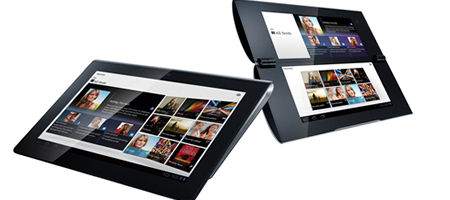Sony’s finally announced plans to release two tablet PCs, a full year after Apple’s launch of the iPad.

Both have an unusual form factor. The S1 is a slate-style model that tapers from top to bottom, and which is aimed at media applications. Meanwhile, the S2 is a folding clamshell design designed for mobile communications as well as entertainment. They’re based on the Nvidia Tegra 2 processor.
The S1 features a 9.4-inch touchscreen display, while the S2 has two 5.5-inch touchscreens; they can operate as one, or with one acting as display and the other as keyboard. Both will offer wireless connectivity through Wifi, 3G or 4G and will run the tablet-specific Android 3.0 Honeycomb operating system. They’ll allow the use of PlayStation games.
“Android 3.0 is a new version of the Android platform with a new holographic user interface that is designed from the ground up for devices with larger screen sizes, particularly tablets,” says senior vice president for mobile, Andy Rubin.
“I’m excited about Sony Tablet as it will further spur the development of applications and network offerings which users are looking for.”
Both will be available worldwide by fall; pricing, and the detailed specifications, haven’t yet been released.
But Sony will have an uphill struggle knocking Apple of its perch any time soon. According to recent figures from Gartner, the Apple iOS will still account for 47 percent of the tablet market by 2015.
The company reckons that Android will increase its worlwide share of the tablet market from its present 20 percent to 39 percent in 2015, but will be hampered by Google’s decision not to open up Honeycomb.
“Volume will be driven by support from many players, the ecosystem of applications for tablets getting more competitive and some platform flexibility allowing lower price points,” says Gartner principal analyst Roberta Cozza.
“The new licensing model Google has introduced with Honeycomb enables Google to drive more control, allowing only optimal tablet implementations that don’t compromise quality of experience. This might mean that prices will drop at a slower pace than what we have seen in the smartphone market.”






